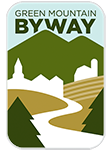
Four-Season Green Mountain Vermont Scenery
Some of the most outstanding four-season Green Mountain Vermont scenery, landscapes and open spaces are found along the Green Mountain Byway. To the west, the Byway runs between the high ridge of the Green Mountains. To the east, the Byway spans to the peaks of the Worcester Range. The Green Mountain Byway affords numerous views of the slopes and summits. Open spaces along the corridor provide stunning views as well. These include wide meadows, farmland, forests, and Vermont’s iconic covered bridges, set against the mountain backdrop. Visitors and residents alike celebrate spectacular fall foliage colors along with summer and winter seasons.
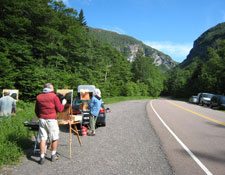
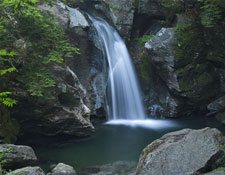
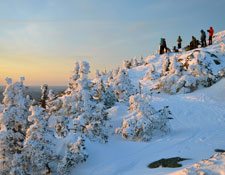
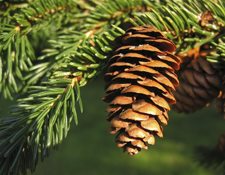

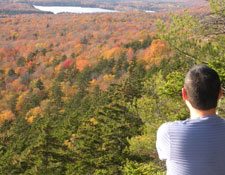
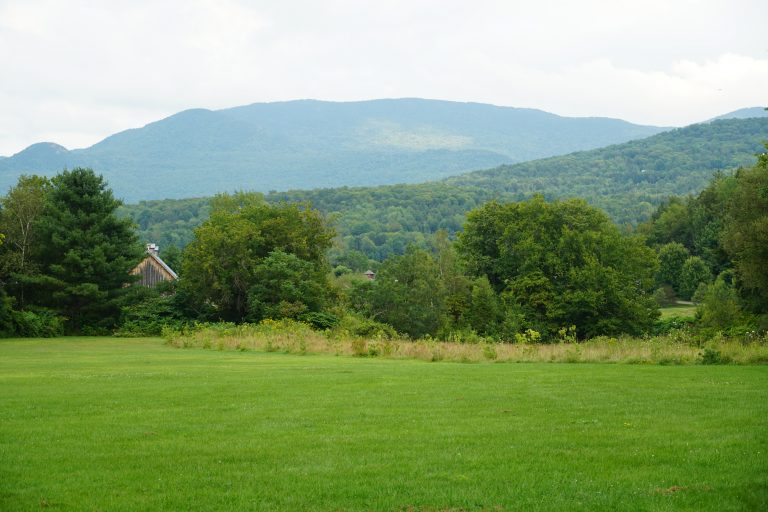
Scenic Vistas
The land cradling the Byway enjoys a unique natural legacy. Mount Mansfield stands as Vermont’s highest peak (4,393 feet). The mountain holds a dominant presence in the region. It serves as a primary natural and cultural Vermont landmark. In addition, recreational activities define the area. The region’s recreation is based on the natural qualities of Mount Mansfield and the hills, valleys and rivers of the region. Information on hiking Mount Mansfield, four-season Green Mountain scenery and local vistas throughout the Byway region is available. Resources include the Stowe & Waterbury Recreation Guide and Green Mountain Club hiking guides.
Smugglers’ Notch on Route 108 connects Cambridge to Stowe. From the top, one may access a section of the Long Trail that leads to Sterling Pond. A short walk from the pond to the Sterling Ski Lift gives you views of Lake Champlain. If you are lucky, on a clear day you can glimpse light shining off the skyscrapers of Montreal (97 miles away). Another great hike is Prospect Rock in Johnson, offering a gentle incline and four-season views of the Lamoille River Valley.
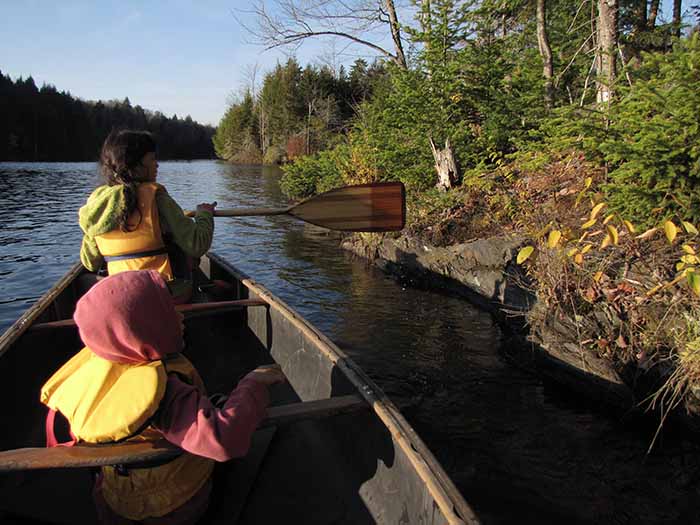
Vermont State Parks
The Waterbury Reservoir is the largest water body in this area and ninth largest in the state. It was constructed in the 1930s by the Civilian Conservation Corps (CCC) to control flooding in the Winooski River Valley. The Reservoir now offers boating, fishing, swimming, and picnicking. In addition, the Brewster River Gorge, the Krusch Nature Preserve in Cambridge, and the Green River Reservoir in Hyde Park are popular spots offering four-season Green Mountain scenery.
More info on area State Parks.
Meander along Smugglers’ Notch, through Smugglers’ Notch State Park and Barnes Camp Visitor Center to Smugglers’ Notch Scenic Highway. Vermont’s most dramatic road passes through picturesque forests and bold rock outcroppings. The road even travels over a shoulder of Mount Mansfield, Vermont’s highest mountain. The recently-restored Barnes Camp Visitor Center is located at the beginning of the Smugglers’ Notch Scenic Highway. It will house an information desk and revolving exhibits on the history, geology, and ecology of the Smugglers’ Notch area. Please note that the road through Smugglers’ Notch, also known as Route 108, is closed to vehicle traffic in winter. More info on Smugglers’ Notch State Park.

Rivers, Streams and Waterfalls
Rivers and streams, including the Little River and West Branch River, are important natural resources. Among other things, they provide opportunities for recreation and scenery. Moss Glen Falls, on the Moss Glen Brook in Stowe, is the highest un-dammed cascade in Vermont (100 ft). Visitors also love the cascading waterfalls of Sterling Falls Gorge and Bingham Falls. These falls tell a story of geologic processes. Sterling Falls Gorge is mostly on private land with public access. Stowe Land Trust conserved Bingham Falls and it is now owned by the Vermont Department of Forests, Parks, and Recreation. Similar falls areas include Brewster River Gorge in Cambridge. Waterfalls may also be found in Johnson, along the Gihon River and Foote Brook’s “Journey’s End.” Journey’s End is a spectacular swimming hole and waterfall carved in the bedrock, accessible from Plot Road.
Iconic Vermont covered bridges span larger sections of river throughout the Byway and along Route 100. Covered bridges are framed by secondary roads and forests along the route. They paint a classic Vermont scene while offering breathtaking four-season Green Mountain scenery and picturesque photo opportunities.
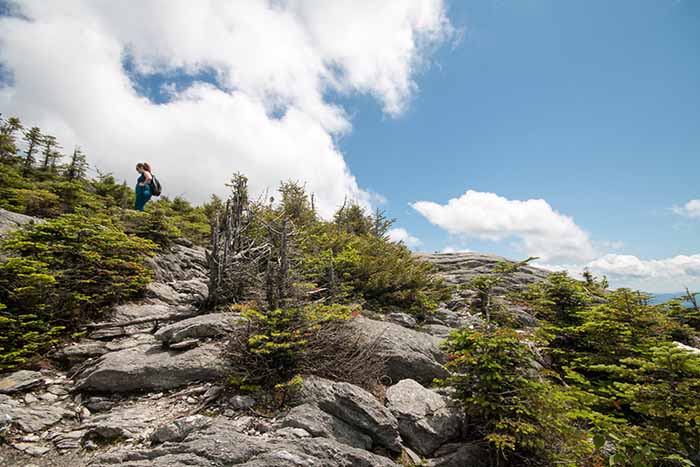
Ecological Resources
The Byway corridor has several areas of sensitive land with ecological value. These important ecosystems provide support to natural life. Three of Vermont’s 34 designated Natural Areas are fully or partially located within the corridor. The region’s Natural Areas include Mount Mansfield, the Worcester Range, and Moss Glen Falls. Additional significant areas include wetlands and floodplains. There are also rare and endangered species habitats. The river banks contain sensitive riparian vegetation. Sections of steep slope are typically visible from many points. Ecological resources contribute greatly to four-season Green Mountain scenery.
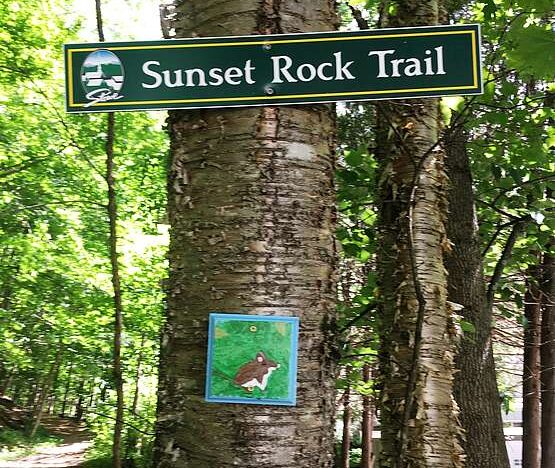
Conservation Legacy
Within the Byway, 38% of the land is conserved, while most of the land is publicly owned. These areas include the Krusch Nature Preserve in Cambridge, Mount Mansfield and CC Putnam State Forests. In addition, a portion of the Middlesex Notch Wildlife Management Area is located along the southern portion of the Worcester Range in Waterbury. Organizations such as the Waterbury Land Initiative, Vermont Land Trust, and Stowe Land Trust continue to acquire and conserve valued lands as a public resource. At the same time, they preserve four-season Green Mountain scenery for generations to come.
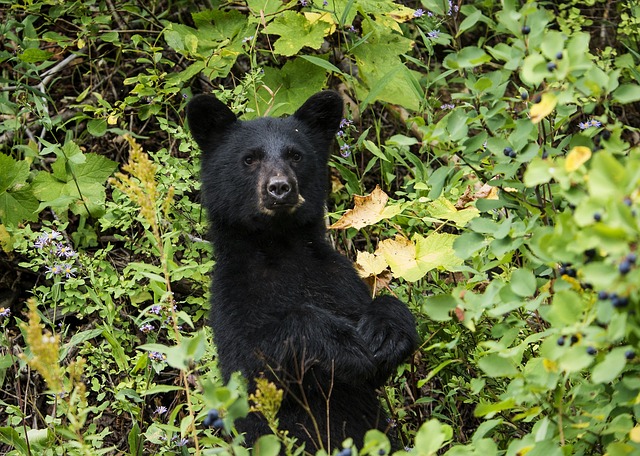
Wildlife
The Byway is home to hundreds of animal species. For instance, the rare Bicknell’s Thrush bird is found near mountain summits. The elusive mountain-roaming bobcat also has a presence. The large natural tracts of land, lakes, and waterways in the Green and Worcester Mountains are home to much of this wildlife. As a result, individual animals and entire wildlife populations must move between these large habitat blocks. Route 100 near the Stowe/Waterbury town line is one of few functional wildlife travel corridors. Please be careful driving the Byway. When visiting, enjoy the wildlife and scenery. Allow a safe distance between humans and wildlife.
